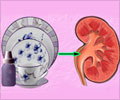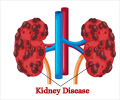Patients who receive night home hemodialysis can live as long as those who receive kidney transplants from deceased donors, Canadian researchers say.
Patients who receive night home hemodialysis can live as long as those who receive kidney transplants from deceased donors, Canadian researchers say.
The study found that the survival between night home dialysis patients and those who received kidney transplants from deceased donors was comparable, while the survival of the patients who received a transplant from a living kidney donor was better than both the other groups. In all 1,239 patients were followed for up to 12 years.Night home hemodialysis patients were from the Toronto General and Humber River Regional Hospitals, both hospitals together representing the largest and longest established group of such patients world-wide.
The results suggest that night home hemodialysis, an intensive dialysis of six to eight hour sessions for up to seven times a week, may be a "bridge to transplant" or a "suitable alternative" to transplant should a patient be too high risk for a transplant or not be able to get a living or deceased donor as the organ shortage continues.
"This study allows me to actually answer what my patients have been asking me for over a decade: 'What does night home hemodialysis mean for my life span?' I can now tell them that this specific dialysis option is as good as getting a transplant from a deceased donor," says Dr. Christopher Chan, Medical Director of Home Hemodialysis at Toronto General Hospital, University Health Network, the R. Fraser Elliott Chair in Home Dialysis and Associate Professor, University of Toronto.
Until this study, there has been no long-term data on night home hemodialysis patient survival, or on how this type of treatment compares to transplantation. In the study, night home hemodialysis patients' data was carefully matched with deceased and living donor kidney transplantation mortality data from the U.S. Renal Data System on characteristics such as age, race, diabetic status and duration of treatment with conventional in-centre dialysis prior to treatment.
The proportion of deaths in each group was then measured, with final figures of 14.7% for night home hemodialysis patients; 14.3% for patients with transplants from deceased donors; and 8.5% for patients with transplants from living donors.
These results diverge from the evidence to date that dialysis is inferior to transplantation, pointed out Dr. Chan, adding that there is much benefit to be gained by long, frequent dialysis.
Advertisement
Florence says that she would have had to wait about 10 years for a kidney from a deceased donor because of her specific risk factors for receiving a transplant. "I always thought that transplant was the only option, so I didn't consider home hemodialysis," she said. "I thought I couldn't do it. But here I am, doing it, and living a normal life."
Advertisement
Source-Medindia
GPL











